Start your smart home journey with voice-compatible bulbs and plugs—they’re affordable and provide instant gratification. Set up a central voice assistant hub like Amazon Echo or Google Nest in a central location. Master essential commands for lighting, temperature, and security before creating custom routines. When issues arise, try power cycling devices or speaking more clearly. Once comfortable with basics, expand your system with cameras, sensors, and automated scenes. The following tips will transform your everyday home into a responsive, intelligent environment.
Start Simple: Choose Voice-Compatible Smart Bulbs and Plugs

Three key factors make smart bulbs an ideal entry point into home automation: they’re affordable, easy to install, and provide immediate satisfaction.
When selecting your first smart bulbs, verify they’re compatible with your preferred voice assistant—Alexa, Google Assistant, or Siri—by checking manufacturer specifications.
Installation is straightforward: power off, replace your existing bulb, power on, then connect to your home’s Wi-Fi through the manufacturer’s app. This allows for remote control via smartphone apps without requiring additional hardware.
Installing smart bulbs couldn’t be simpler—swap out your old bulb and connect to Wi-Fi in minutes.
For best results, start with frequently used fixtures that aren’t controlled by wall switches. Choose appropriate brightness levels (measured in lumens) and color temperatures for each room’s purpose—warm white for living spaces, bright white for work areas.
Once set up, experiment with basic voice commands like “turn on the kitchen light” before exploring more advanced routines and schedules.
Setting Up Your First Voice Assistant Hub
Selecting the right voice assistant hub forms the foundation of your smart home ecosystem. Choose between Amazon Echo, Google Nest, or Apple HomeKit based on your existing devices and preferred services.
Once you’ve made your selection, download the corresponding app and follow the setup prompts to connect your hub to your Wi-Fi network.
For smooth operation, consider these essential factors:
- Position your hub centrally to guarantee good connectivity with all your smart devices
- Verify device compatibility before purchasing additional smart products
- Regularly update your hub’s software to maintain security and gain new features
Home Assistant is an excellent alternative that prioritizes local control and privacy, giving you independence from major tech ecosystems.
After setup, test basic voice commands to confirm everything’s working properly.
Remember to review privacy settings to control what data your hub collects and stores.
Essential Voice Commands Every Smart Home Beginner Should Know
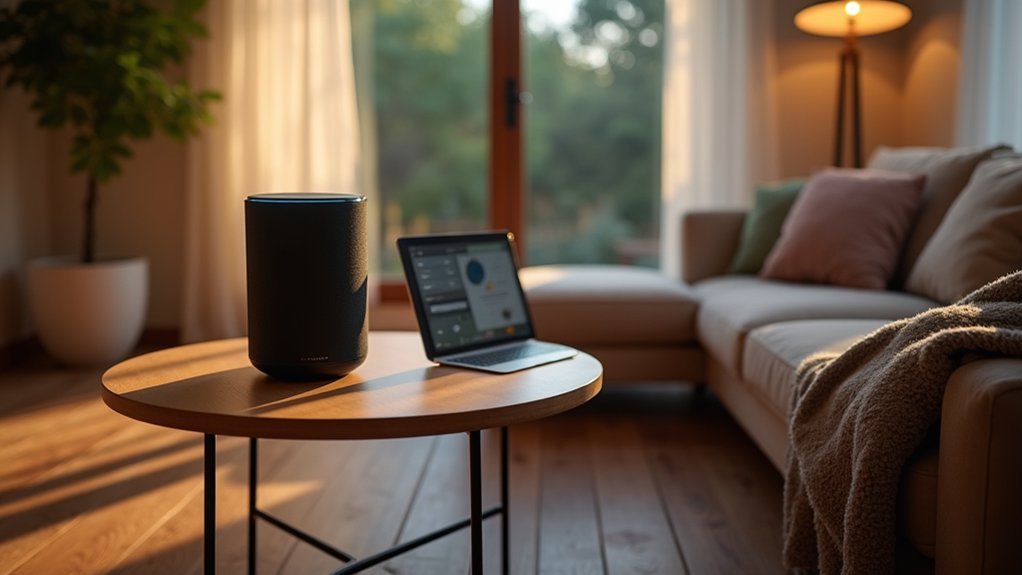
For climate control, try “Set thermostat to 70 degrees” or ask “What’s the current temperature?”
Security commands such as “Lock the front door” or “Show front door camera” provide peace of mind.
Create custom routines to simplify daily activities—say “Good morning” to trigger lights, temperature adjustments, and news updates all at once.
For entertainment, try “Play jazz music in the living room” or “Turn on Movie Night scene” to adjust multiple devices simultaneously.
These fundamental commands will help you navigate your new smart home ecosystem confidently. Popular voice assistants like Google Assistant and Alexa offer extensive compatibility with various smart devices, making them excellent control centers for beginners.
Troubleshooting Common Voice Control Issues
While mastering voice commands builds confidence, even the most well-designed smart homes occasionally experience hiccups with voice control. When your voice assistant seems unresponsive, start with simple fixes like power cycling your devices and router to resolve temporary connectivity glitches.
Voice recognition problems often stem from environmental factors or command phrasing:
- Speak clearly in a normal volume and reduce background noise when issuing commands
- Simplify complex instructions into shorter, more direct phrases
- Position your devices within ideal range of your router or consider adding signal extenders
If issues persist, check your internet speed—slow connections greatly impact voice processing performance. For optimal security, set up unique passwords on all your voice-controlled devices to prevent unauthorized access.
Remember that regular software updates improve recognition capabilities, so keep your devices and apps current.
Expanding Your System: Next Steps After Mastering the Basics
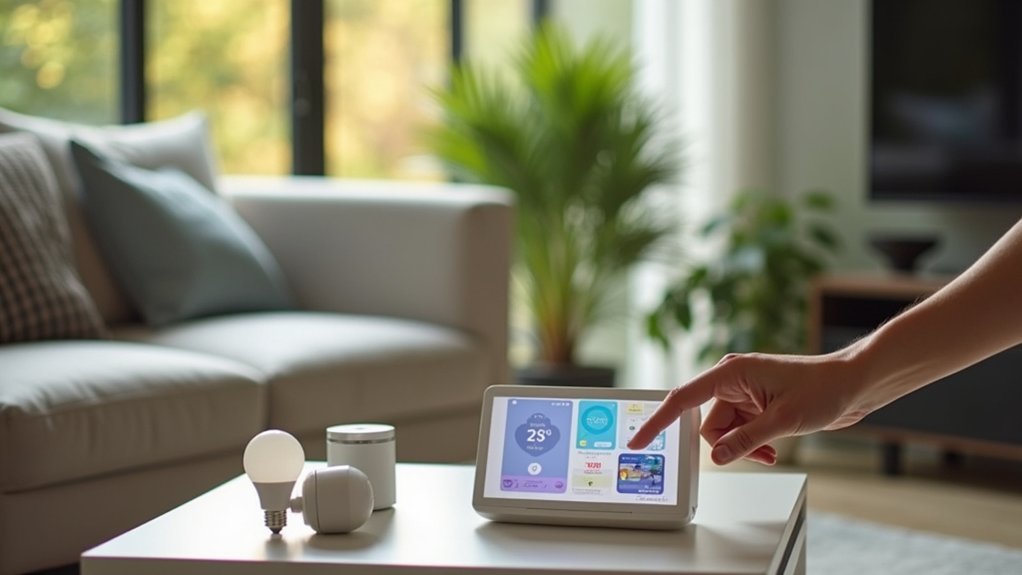
Once you’ve mastered the basics of home automation, you’re ready to transform your smart home from a collection of convenient gadgets into a thorough ecosystem. Focus on strategic expansion that enhances your daily routines while maintaining system stability. Utilizing Wi-Fi connectivity will ensure easier smartphone integration for your expanding system.
| Expansion Area | Implementation Strategy |
|---|---|
| Smart Devices | Add cameras, sensors, and video doorbells for enhanced security |
| Integration | Use hubs to connect devices with compatible protocols |
| Automation | Create custom scenes and routines triggered by schedules |
| Infrastructure | Upgrade network capacity and organize cable management |
| Future Planning | Choose scalable systems with modular components |
Consider consulting with professionals when planning electrical upgrades. Remember to regularly update device software to maintain compatibility and security. As you expand, prioritize devices that solve real problems in your home rather than adding technology for its own sake.
Frequently Asked Questions
How Much Money Should I Budget for My First Smart Home Setup?
Budget $200-500 for your first smart home setup. You’ll need a smart speaker ($50-200), a few smart bulbs ($40-80), some smart plugs ($15-40 each), and possibly a basic security camera ($40-150).
Can Smart Devices Be Hacked and How Can I Prevent It?
Yes, smart devices can be hacked. You’ll prevent most attacks by using strong passwords, updating firmware regularly, securing your WiFi network, enabling two-factor authentication, and buying devices from reputable manufacturers with good security records.
Do Smart Home Devices Work During Internet Outages?
Yes, many smart home devices work during internet outages. You’ll keep basic functions like light switches and hub-connected devices, but you’ll lose voice commands, remote access, and cloud-dependent features until your connection returns.
Which Wireless Protocol Is Best for My Home Automation Needs?
Choose Z-Wave for reliability and wide compatibility, Zigbee for mesh networking, Wi-Fi for high-speed data needs, or BLE for battery-powered devices. Your best protocol depends on your specific automation priorities and existing setup.
Will My Existing Non-Smart Appliances Work With Home Automation Systems?
Most non-smart appliances can work with home automation through smart plugs, IR blasters, or retrofit switches. You’ll get basic on/off control, but won’t access advanced features available in true smart devices.
In Summary
You’ve now got the knowledge to start your voice-controlled smart home journey! Don’t worry about mastering everything at once—begin with these basic commands and gradually expand as you grow more comfortable. Remember, automation should make your life easier, not more complicated. When you’re ready, explore scenes, routines, and more advanced integrations. Your voice is now the most powerful tool in your home!


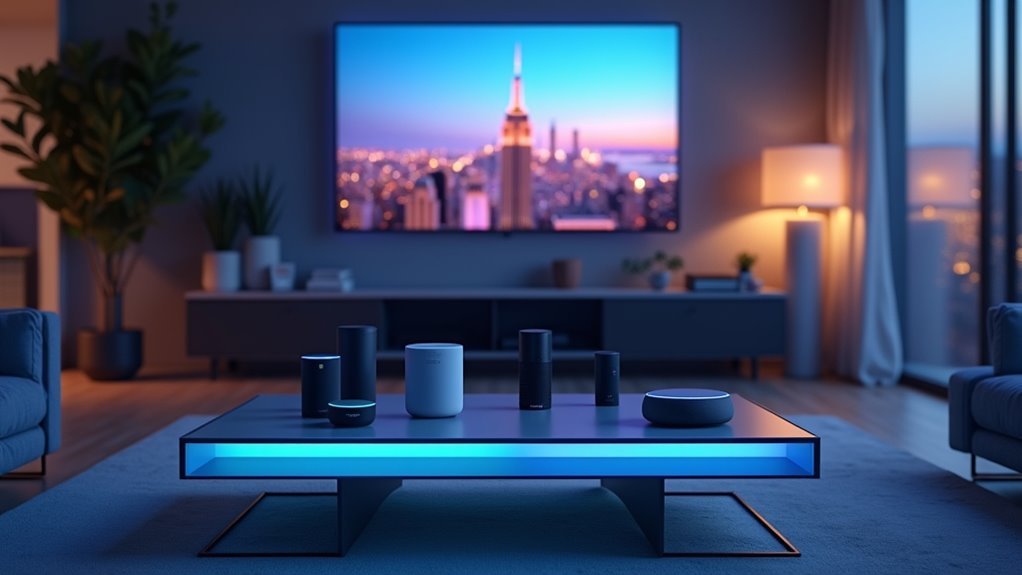
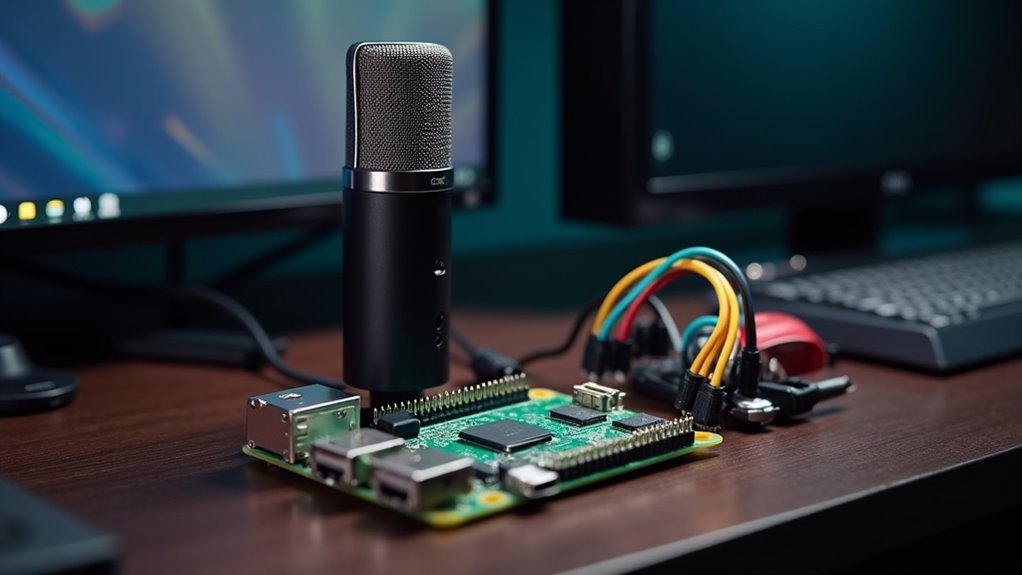
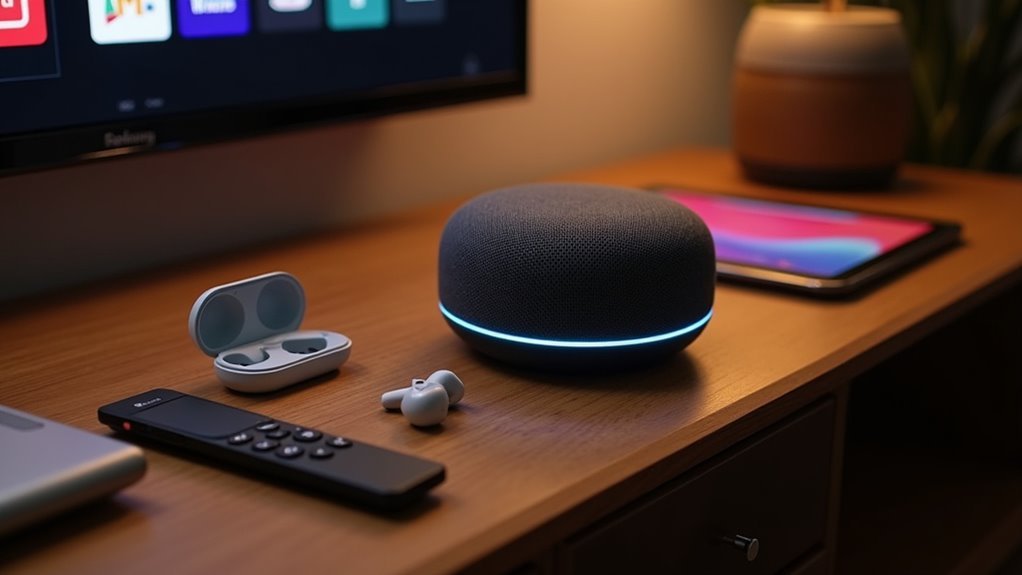
Leave a Reply